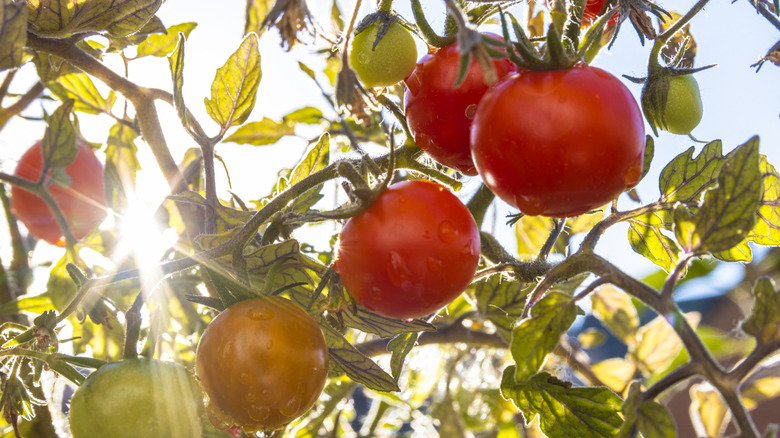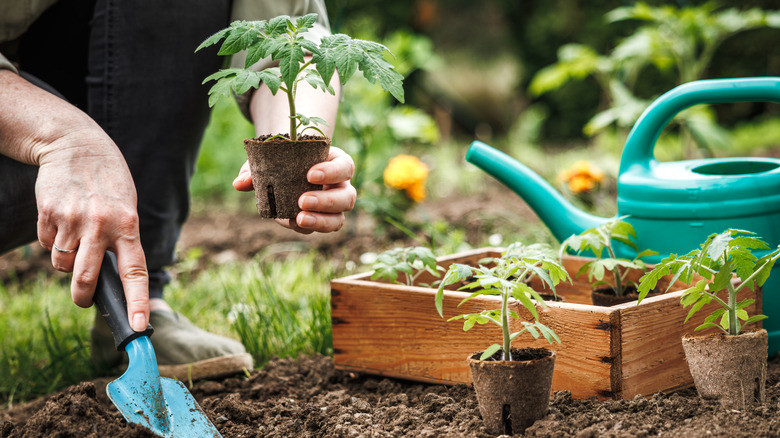The Best Type Of Soil For Growing Healthy Garden Tomatoes
We may receive a commission on purchases made from links.
If you're eager to grow the best possible tomatoes, filling your garden with high-quality soil should be one of your highest priorities. Tomatoes crave a growing medium that's relatively loose and loaded with nutrients such as calcium, magnesium, and phosphorous. Though these plants require consistent hydration and soil that holds some moisture, they also need excess water to drain away quickly. Sandy loam usually meets these requirements, but its pH level needs to be in the right range for your plants to truly excel at making fruit. Tomatoes will tolerate a pH level as high as 7.0, but the sweet spot is between 6.0 and 6.5. Tailoring your garden's soil to your tomatoes' needs and preferences boosts your chances of healthy plants and a top-notch harvest.
Before introducing fertilizer or substances that change your garden's pH level, test your soil to determine its baseline. Request a test from a cooperative extension office or use a product such as the MySoil Test Kit to see if you need to address nutrient deficiencies or alter the acidity of your tomatoes' home. Amending your soil with unnecessary nutrient boosters may cause problems. For example, adding nitrogen to soil that already has enough can prevent tomato plants from flowering or fruiting. Likewise, to effectively apply a product such as Espoma organic soil acidifier, you must know how much to lower your soil's pH level. This will help you determine the right amount to use. If you make the soil overly acidic, your plants may have trouble taking in nutrients. This can stunt their growth and lead to blossom end rot, which makes the bottoms of tomatoes turn brown.
Why sandy, mildly acidic loam is ideal for tomatoes
Tomatoes adore loam because its blend of large, medium, and small particles holds just the right amount of moisture. This soil texture also allows oxygen to move through the soil with ease, which helps tomato plants develop strong root systems. Loam that's on the sandy side of the spectrum excels at draining extra water that might otherwise pool around roots. Efficient drainage lowers risk of rot and fungal diseases such as blight, which thrive in warm, wet conditions. This makes sandy loam of a fine choice for tomatoes. Topdressing tomato plants' soil with mulch can provide additional blight prevention. Consider using an organic mulch that enhances the soil's nutrient profile as it breaks down.
Mildly acidic soil is best for tomato plants since it makes crucial nutrients available to them. If the soil's pH level is below 6.0 or above 6.5, the plants may struggle to use the vitamins and minerals they need most. A suboptimal pH level can also disrupt plant metabolism and other important processes that occur at the cellular level. You can lower your soil's pH with elemental sulfur or raise it with lime. Make sure the soil is warmer than 55 degrees Fahrenheit when incorporating these substances. If your garden contains clay, which tends to have poor drainage, try working compost into it. Compost enhances soil structure and improves the flow of both water and air. As an added benefit, it gradually releases nutrients throughout the growing season.

